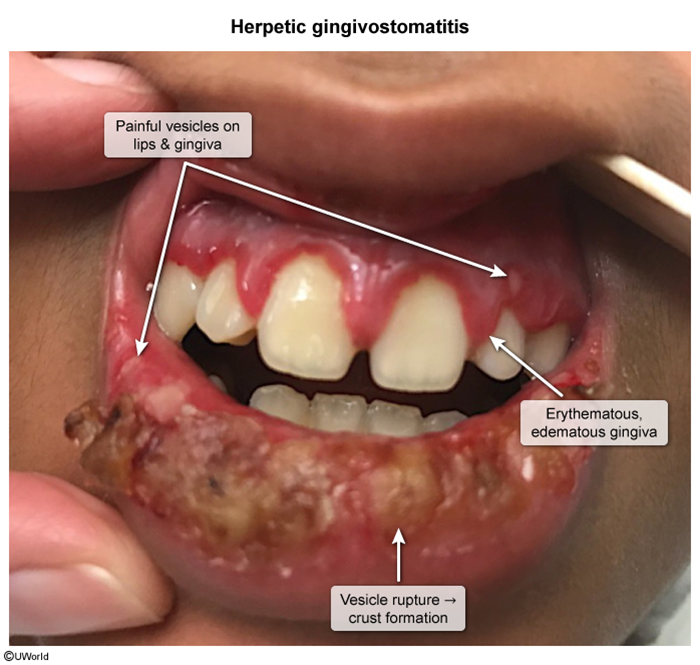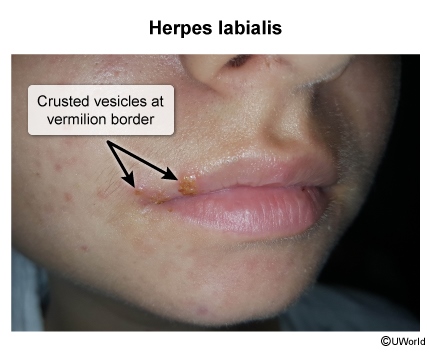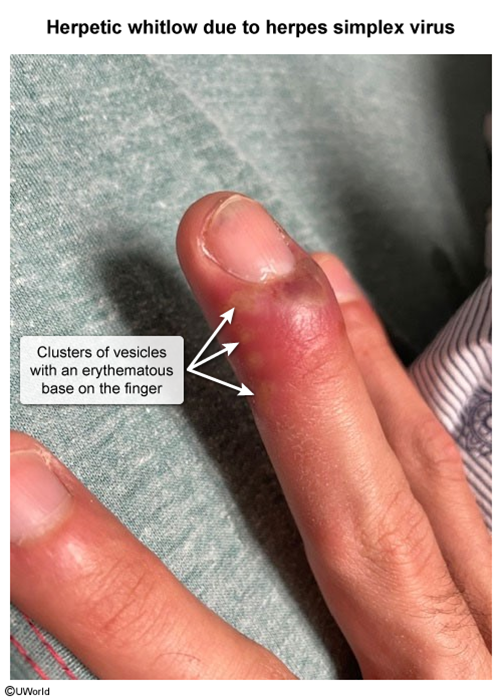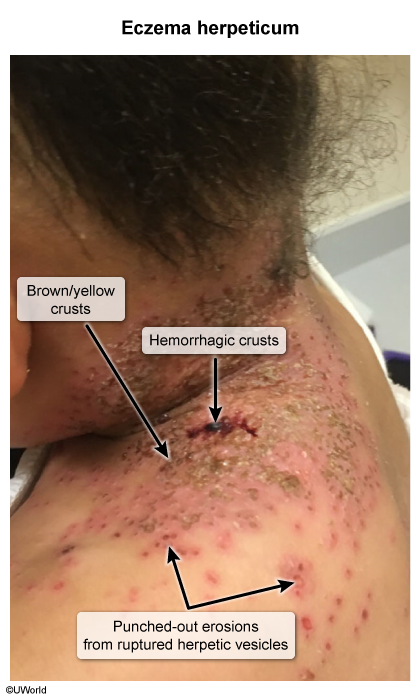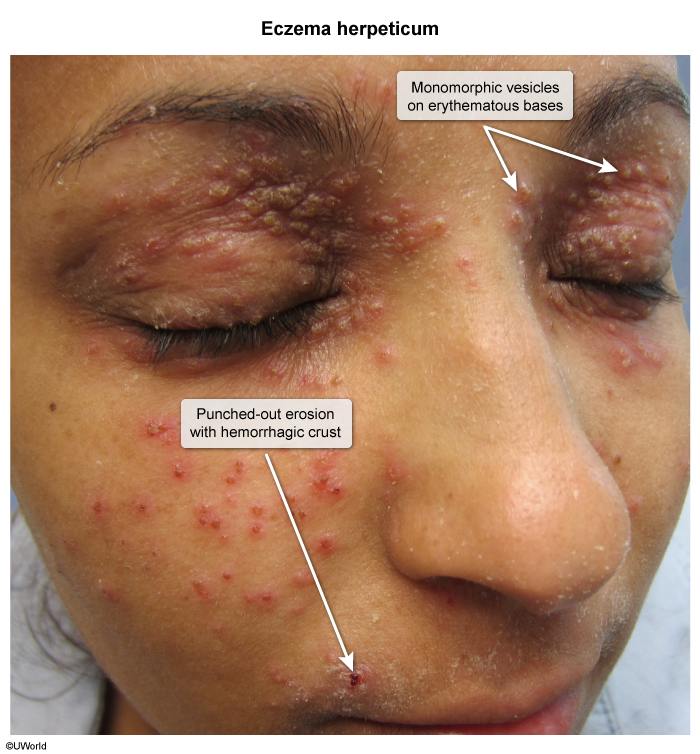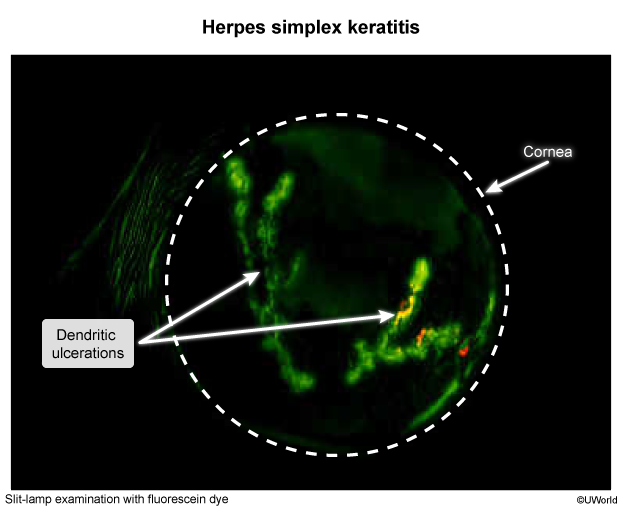Herpes Simplex Virus (HSV)
Article Sections
Introduction
Herpes simplex virus (HSV) are double-stranded DNA viruses that cause life-long infection within the host with periods of latency and reactivation. HSV can be divided into two serotypes: HSV-1 and HSV-2.
Risk factors
- Oral contact: most common mode of transmission, often through kissing or sharing utensils
- Young age: commonly acquired during childhood
- Crowded living conditions: higher transmission rates due to close contact
- Immunosuppression: increased risk of severe or recurrent infections
- Sexual contact with no barrier protection, multiple sexual partners
- Female gender
- Immunosuppression
Pathophysiology
Herpes simplex virus (HSV) is an enveloped, double-stranded DNA virus with 2 different serotypes: HSV-1 and HSV-2, according to the glycoproteins in the lipid bilayer envelope (glycoprotein G1 is associated with HSV-1 and glycoprotein G2 is associated with HSV-2). Classically, HSV-1 is associated with gingivostomatitis (ie, vesicles on the anterior oral mucosa) and HSV-2 is associated with genital infection; however, infection with either serotype can occur at either location.
Continue Learning with UWorld
Get the full Herpes Simplex Virus (HSV) article plus rich visuals, real-world cases, and in-depth insights from medical experts, all available through the UWorld Medical Library.
Images
